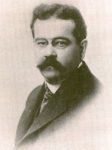 SHORT ANSWER: IT’S PART OF the tagline for this blog. Longer answer: it’s a way of seeing and living that recognizes and hopefully honors the interconnectedness of all things, and That which makes them (it?) all possible.
SHORT ANSWER: IT’S PART OF the tagline for this blog. Longer answer: it’s a way of seeing and living that recognizes and hopefully honors the interconnectedness of all things, and That which makes them (it?) all possible.
“Holiness” is a tricky word. My trusty go-to 1972 Funk and Wagnalls defines “holy” as “regarded with or characterized by reverence because associated with God; having a divine origin; sacred” as well as “having spiritual and moral worth.” “Holiness” is “the state or quality of being holy.”



